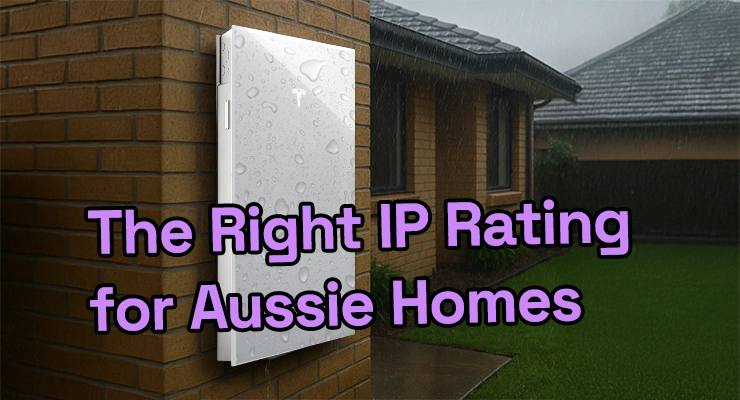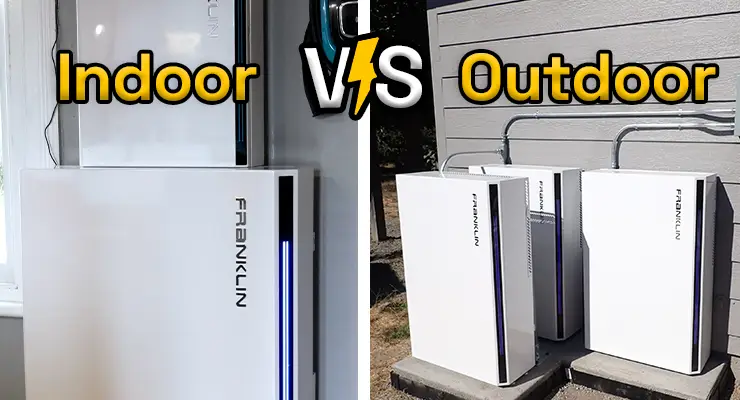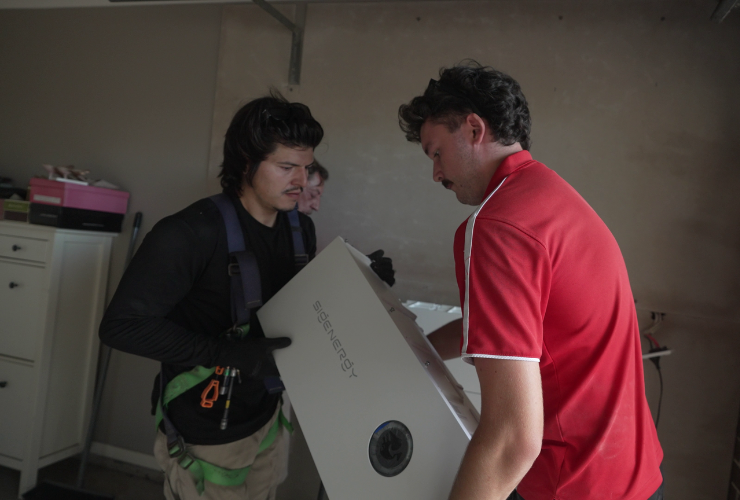Fast read
In Australia, the primary standard governing the safety of home battery installations, including their enclosures, is AS/NZS 5139:2019. This standard works in tandem with a product's Ingress Protection (IP) rating, which defines its resistance to dust and water. For outdoor installations, a robust IP rating like IP65 or higher is crucial to protect against everything from driving rain to fine dust, ensuring both safety and longevity in Australia's varied and often harsh climate.
What standards apply to battery enclosures in extreme Australian weather?
Choosing to install a home battery is a significant step towards energy independence, but in a country with weather as diverse and demanding as Australia, it’s natural to have questions about durability. From scorching summer heatwaves to intense downpours and pervasive dust, your battery’s enclosure is its first and most important line of defence.
Thankfully, Australia has a robust set of standards designed to ensure that battery systems are installed safely and built to last. Understanding these standards can give you confidence that your investment is properly protected, no matter the weather.
What are the key Australian standards for battery safety?
The most important standard for any homeowner to be aware of is AS/NZS 5139:2019, Electrical installations – Safety of battery systems for use with power conversion equipment. This comprehensive document outlines the specific safety and installation requirements for all grid-connected battery energy storage systems (BESS). It was developed to address the unique challenges of battery technology, including the risks of fire, electrical hazards, and chemical exposure.
For your battery’s enclosure, AS/NZS 5139 specifies requirements for:
- Fire Resistance: The standard mandates where a battery can be placed and what materials must be used around it to prevent the spread of fire. For example, it requires a non-combustible barrier, like cement sheeting, behind the unit if installed on a timber-framed wall.
- Physical Protection: It sets out rules to shield the battery from mechanical damage. If the battery is in a location where it could be hit by a vehicle, such as a garage, the standard requires the installation of protective bollards unless the position itself provides adequate protection.
- Location Restrictions: The standard prohibits installation in certain areas like habitable rooms, ceiling spaces, and under stairways to ensure safety and clear evacuation paths.
Compliance with AS/NZS 5139 is not optional; it’s a legal requirement for all installations. A qualified and accredited installer will have extensive knowledge of this standard and ensure your system is compliant.
How do standards protect batteries from extreme heat?
Extreme heat is a major concern for battery health. While batteries can operate across a wide temperature range, their optimal performance and longevity are typically found between 15°C and 35°C. High temperatures can accelerate cell degradation and reduce efficiency, shortening the lifespan of your system. To prevent damage, a battery’s internal management system (BMS) will reduce power output if it gets too hot. While this varies by manufacturer, this throttling can occur at temperatures around 50-55°C.
AS/NZS 5139 addresses thermal safety by mandating adequate ventilation and clearance around the battery enclosure. This ensures that heat generated during operation can dissipate effectively. Your installer must follow the manufacturer’s specific clearance requirements, which typically involve leaving 200-300mm of clear space around vents.
The best defence against heat starts with smart placement. An accredited installer will recommend a location that avoids prolonged, direct sunlight, such as on a shaded south or east-facing wall, under a verandah, or inside a garage or utility room.
What is an IP rating, and why does it matter for rain and dust?
Beyond the installation standards, the physical construction of the battery enclosure is defined by its Ingress Protection or IP rating. This is a crucial number to check, especially for outdoor units. An IP rating consists of two digits:
- The first digit (Solid Protection): Rates the enclosure’s protection against solid objects, from fingers to fine dust. This scale runs from 0 (no protection) to 6 (completely dust-tight).
- The second digit (Liquid Protection): Rates the enclosure’s protection against moisture, from dripping water to powerful water jets. This scale runs from 0 (no protection) to 8 (suitable for continuous immersion).
For an outdoor battery in Australia, you should look for a minimum rating of IP55. However, a higher rating provides greater peace of mind. For example:
- IP55: The enclosure is protected against dust and can withstand low-pressure water jets, a rating found on capable systems like the Sungrow SBR series.
- IP66: Offers complete dust-tight protection and can resist powerful water jets, making it a robust choice for areas exposed to driving rain. Premium systems like the Sigenergy SigenStor feature an IP66 rating, highlighting their design for harsh conditions.
This rating ensures that fine red dust from the outback or heavy rain in a coastal storm won’t compromise the sensitive electronics within the enclosure.
Are there other important installation requirements?
A compliant and durable installation goes beyond just the enclosure itself. An accredited installer will also ensure:
- The battery is mounted on a solid, level surface to prevent water from pooling around its base.
- All electrical conduits are properly sealed to stop moisture from tracking into the terminals.
- In flood-prone areas, the battery is installed above the defined flood level, as required by AS/NZS 5139.
Questions to ask your installer about placement
To feel confident in your installation, don’t hesitate to ask your accredited professional specific questions:
- What is the IP rating of the battery unit you are recommending?
- Why is this specific location the best choice for protecting the battery from the sun and rain?
- How will you ensure the installation meets all the ventilation and fire-safety requirements of AS/NZS 5139?
- Can you show me the manufacturer’s specifications regarding operating temperatures and clearances?
Conclusion: Trusting the standards for a resilient system
Australia’s extreme weather poses a genuine challenge, but our safety standards are designed to meet it head-on. The combination of mandatory installation rules under AS/NZS 5139 and robust product construction verified by a high IP rating provides a powerful two-layer defence for your home battery system.
By choosing a quality product and, most importantly, engaging a Solar Accreditation Australia (SAA) accredited installer, you can ensure these standards are correctly applied. SAA is the sole accreditation body for installers under the Small-scale Renewable Energy Scheme, having fully taken over this role from the Clean Energy Council (CEC) as of 29 May 2024. This approach is the best way to safeguard your investment, ensuring your battery operates safely and effectively for many years, providing clean energy regardless of the weather outside.





